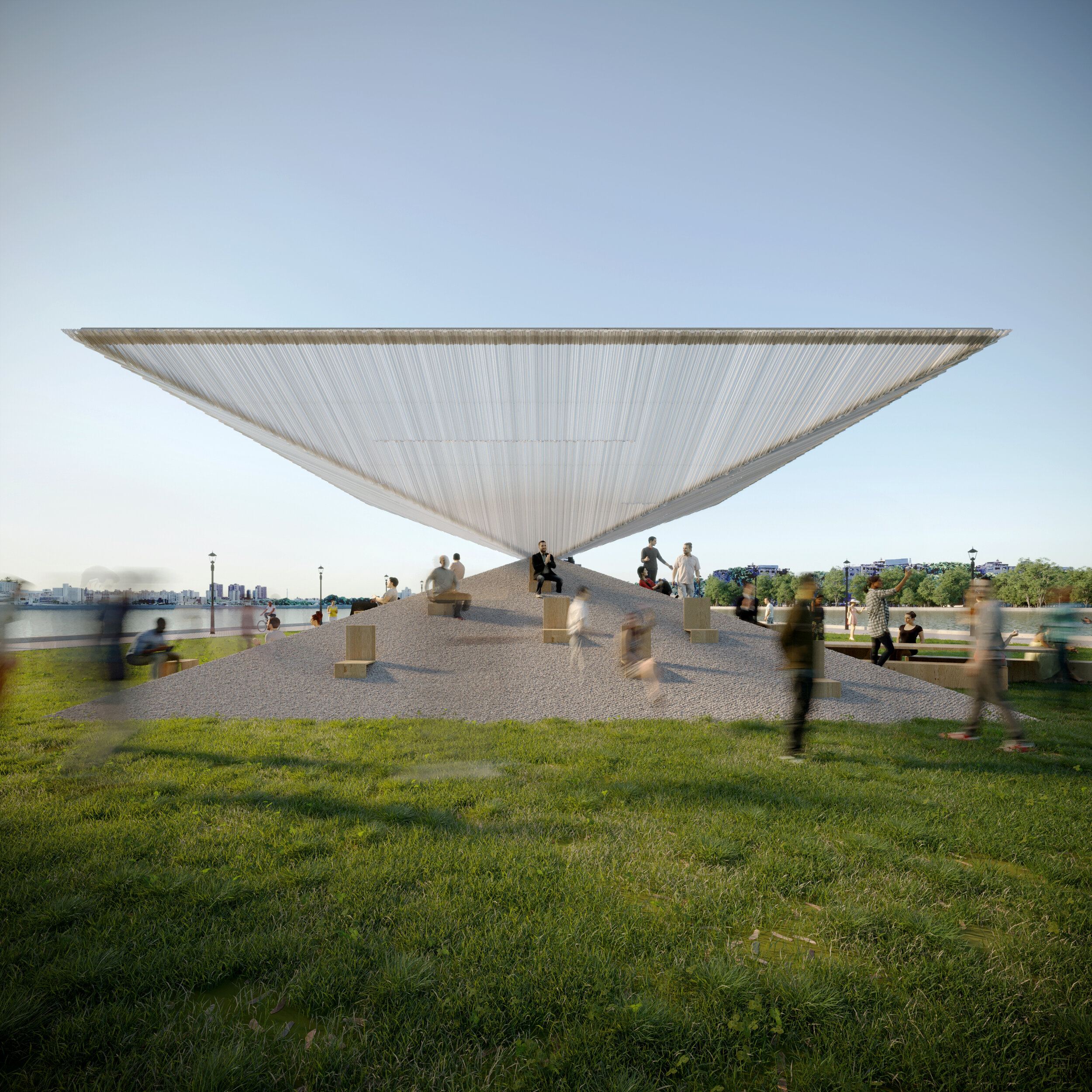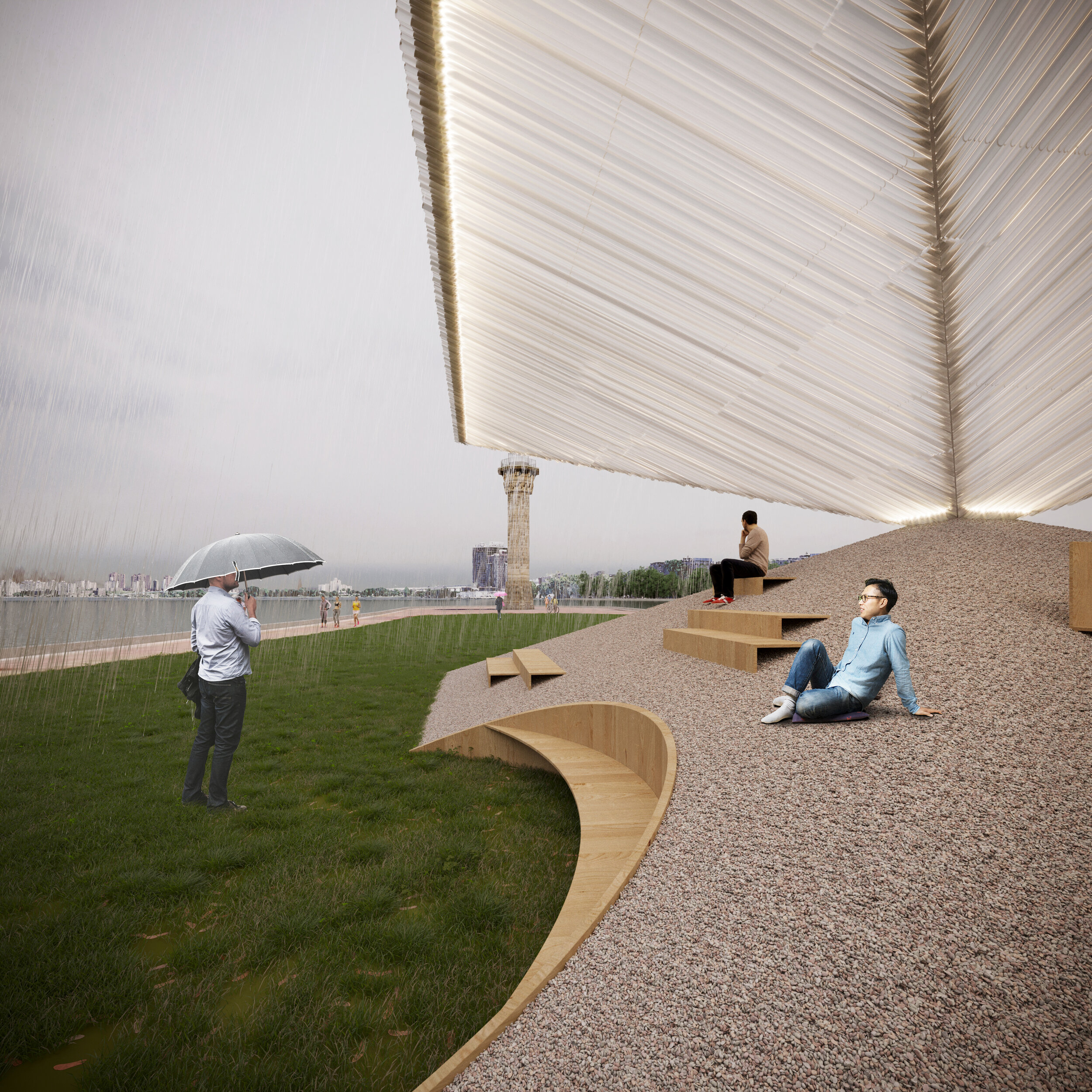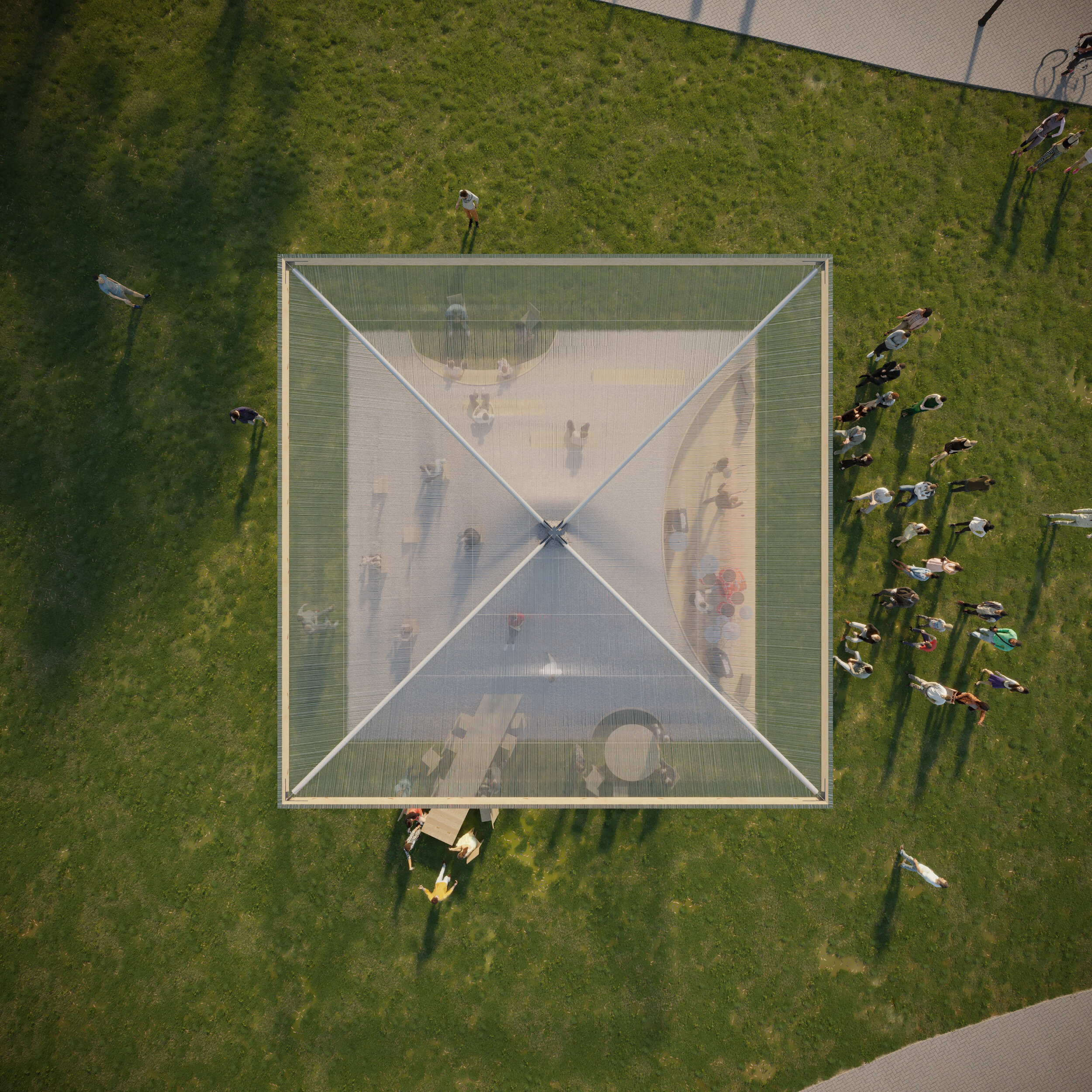Repose Pavilion
Location
Timeframe
Client
Program
Status
Roosevelt Island, New York, New York
2019-2020
FIGMA / AIANY (EANY) / SEAoNY
Public Pavilion/Venue
Competition Winner (Unbuilt)
Architecture has always been slow – slow to learn, slow to adapt, and slow to progress. It’s been just over 40 years since the Resource Conservation and Recovery Act introduced the slogan “Reduce, Reuse, Recycle” as a way to get the general population conscious of environmental concerns.Only recently has the profession of architecture really wrangled with these principles and started to react to its implications. This proposal for the City of Dreams Pavilion replaces the first stipulation of the famed mantra—reduce—with repose, which acts as a semiotic device and serves a conceptual function, being both instrumental and motivational. With the former, it is a basic property of materiality and an intrinsic form-finding device; with the latter, it is a call to action and the very human act underlying the pavilion’s purpose.
A natural phenomenon, the angle of repose is determined by the unique properties of a granular material in action, but also serves as an important metaphor for the current environmental crisis facing almost all aspects of our lives today. There is a balance and order in the natural world for which humanity has long tested, and today we are evermore at its inflection point. The ambition of this pavilion is to operationalize this sensed instability and derive an architectural language that also informs, directs, and challenges architectural notions of tectonics, structure, and construction.
The Earth is changing at a rate that is now visible to the naked eye. It is no longer speculation that our relationship to the world’s ecosystem has jeopardized the natural balance, and that today, we are witnessing its consequences. The conceptual basis of this project stems from the fact that we are shifting from a stable ecology to an unstable one; from solidity to fragmentation, from stasis to imbalance, from the natural to the manmade.
This pavilion represents this shift, instrumentalizes it as a concept, and creates an experience that compels visitors to contemplate where architecture and people go next. The pyramid, one of civilizations oldest formal products, is a symbol of balance and power. Through its doubling, inversion, and stacking, it produces an uncanny artifact; an architecture of perceived instability.











